- Home
- Isaac Asimov
Asimov’s Future History Volume 19 Page 29
Asimov’s Future History Volume 19 Read online
Page 29
The Far Star had accelerated to a speed of 0.1 c, one tenth the speed of light. Trevize knew well that, in theory, the ship could be accelerated to nearly the speed of light, but he also knew that, in practice, 0.1 c was the reasonable limit.
At that speed, any object with appreciable mass could be avoided, but there was no way of dodging the innumerable dust particles in space, and, to a far greater extent even, individual atoms and molecules. At very fast speeds, even such small objects could do damage, scouring and scraping the ship’s hull. At speeds near the speed of light, each atom smashing into the hull had the properties of a cosmic ray particle. Under that penetrating cosmic radiation, anyone on board ship would not long survive.
The distant stars showed no perceptible motion in the viewscreen, and even though the ship was moving at thirty thousand kilometers per second, there was every appearance of its standing still.
The computer scanned space to great distances for any oncoming object of small but significant size that might be on a collision course, and the ship veered gently to avoid it, in the extremely unlikely case that that would be necessary. Between the small size of any possible oncoming object, the speed with which it was passed, and the lack of inertial effect as the result of the course change, there was no way of telling whether anything ever took place in the nature of what might be termed a “close call.”
Trevize, therefore, did not worry about such things, or even give it the most casual thought. He kept his full attention on the three sets of co-ordinates he had been given by Deniador, and, particularly, on the set which indicated the object closest to themselves.
“Is there something wrong with the figures?” asked Pelorat anxiously.
“I can’t tell yet,” said Trevize. “Co-ordinates in themselves aren’t useful, unless you know the zero point and the conventions used in setting them up-the direction in which to mark off the distance, so to speak, what the equivalent of a prime meridian is, and so on.”
“How do you find out such things?” said Pelorat blankly.
“I obtained the co-ordinates of Terminus and a few other known points, relative to Comporellon. If I put them into the computer, it will calculate what the conventions must be for such co-ordinates if Terminus and the other points are to be correctly located. I’m only trying to organize things in my mind so that I can properly program the computer for this. Once the conventions are determined, the figures we have for the Forbidden Worlds might possibly have meaning.”
“Only possibly?” said Bliss.
“Only possibly, I’m afraid,” said Trevize. “These are old figures after all-presumably Comporellian, but not definitely. What if they are based on other conventions?”
“In that case?”
“In that case, we have only meaningless figures. But-we just have to find out.”
His hands flickered over the softly glowing keys of the computer, feeding it the necessary information. He then placed his hands on the handmarks on the desk. He waited while the computer worked out the conventions of the known co-ordinates, paused a moment, then interpreted the co-ordinates of the nearest Forbidden World by the same conventions, and finally located those co-ordinates on the Galactic map in its memory.
A starfield appeared on the screen and moved rapidly as it adjusted itself. When it reached stasis, it expanded with stars bleeding off the edges in all directions until they were almost all gone. At no point could the eye follow the rapid change; it was all a speckled blur. Until finally, a space one tenth of a parsec on each side (according to the index figures below the screen) “all that remained. There was no further change, and only half a dozen dial sparks relieved the darkness of the screen.
“Which one is the Forbidden World?” asked Pelorat softly.
“None of them,” said Trevize. “Four of them are red dwarfs, one a near-red dwarf, and the last a white dwarf. None of them can possibly have a habitable world in orbit about them.”
“How do you know they’re red dwarfs just by looking at them?”
Trevize said, “We’re not looking at real stars; we’re looking at a section of the Galactic map stored in the computer’s memory. Each one is labeled. You can’t see it and ordinarily I couldn’t see it either, but as long as my hands are making contact, as they are, I am aware of a considerable amount of data on any star on which my eyes concentrate.”
Pelorat said in a woebegone tone, “Then the co-ordinates are useless.”
Trevize looked up at him, “No, Janov. I’m not finished. There’s still the matter of time. The co-ordinates for the Forbidden World are those of twenty thousand years ago. In that time, both it and Comporellon have been revolving about the Galactic Center, and they may well be revolving at different speeds and in orbits of different inclinations and eccentricities. With time, therefore, the two worlds may be drifting closer together or farther apart and, in twenty thousand years, the Forbidden World may have drifted anywhere from one-half to five parsecs off the mark. It certainly wouldn’t be included in that tenth-parsec square.”
“What do we do, then?”
“We have the computer move the Galaxy twenty thousand years back in time relative to Comporellon.”
“Can it do that?” asked Bliss, sounding rather awe-struck.
“Well, it can’t move the Galaxy itself back in time, but it can move the map in its memory banks back in time.”
Bliss said, “Will we see anything happen?”
“Watch,” said Trevize.
Very slowly, the half-dozen stars crawled over the face of the screen. A new star, not hitherto on the screen, drifted in from the left hand edge, and Pelorat pointed in excitement. “There! There!”
Trevize said, “Sorry. Another red dwarf. They’re very common. At least three fourths of all the stars in the Galaxy are red dwarfs.”
The screen settled down and stopped moving.
“Well?” said Bliss.
Trevize said, “That’s it. That’s the view of that portion of the Galaxy as it would have been twenty thousand years ago. At the very center of the screen is a point where the Forbidden World ought to be if it had been drifting at some average velocity.”
“Ought to be, but isn’t,” said Bliss sharply.
“It isn’t,” agreed Trevize, with remarkably little emotion.
Pelorat released his breath in a long sigh. “Oh, too bad, Golan.”
Trevize said, “Wait, don’t despair. I wasn’t expecting to see the star there.”
“You weren’t?” said Pelorat, astonished.
“No. I told you that this isn’t the Galaxy itself, but the computer’s map of the Galaxy. If a real star is not included in the map, we don’t see it. If the planet is called ‘Forbidden’ and has been called so for twenty thousand years, the chances are it wouldn’t be included in the map. And it isn’t, for we don’t see it.”
Bliss said, “We might not see it because it doesn’t exist. The Comporellian legends may be false, or the co-ordinates may be wrong.”
“Very true. The computer, however, can now make an estimate as to what the co-ordinates ought to be at this time, now that it has located the spot where it may have been twenty thousand years ago. Using the co-ordinates corrected for time, a correction I could only have made through use of the star map, we can now switch to the real starfield of the Galaxy itself.”
Bliss said, “But you only assumed an average velocity for the Forbidden World. What if its velocity was not average? You would not now have the correct co-ordinates.”
“True enough, but a correction, assuming average velocity, is almost certain to be closer to its real position, than if we had made no time correction at all.”
“You hope!” said Bliss doubtfully.
“That’s exactly what I do,” said Trevize. “I hope.-And now let’s look at the real Galaxy.”
The two onlookers watched tensely, while Trevize (perhaps to reduce his own tensions and delay the zero moment) spoke softly, almost as though he were lecturing.<
br />
“It’s more difficult to observe the real Galaxy,” he said. “The map in the computer is an artificial construction, with irrelevancies capable of being eliminated. If there is a nebula obscuring the view, I can remove it. If the angle of view is inconvenient for what I have in mind, I can change the angle, and so on. The real Galaxy, however, I must take as I find it, and if I want a change I must move physically through space, which will take far more time than it would take to adjust a map.”
And as he spoke, the screen showed a star cloud so rich in individual stars as to seem an irregular heap of powder.
Trevize said, “That’s a large angle view of a section of the Milky Way, and I want the foreground, of course. If I expand the foreground, the background will tend to fade in comparison. The co-ordinate spot is close enough to Comporellon so that I should be able to expand it to about the situation I had on the view of the map. Just let me put in the necessary instructions, if I can hold on to my sanity long enough. Now.”
The starfield expanded with a rush so that thousands of stars pushed off every edge, giving the watchers so real a sensation of moving toward the screen that all three automatically leaned backward as though in response to a forward rush.
The old view returned, not quite as dark as it had been on the map, but with the half-dozen stars shown as they had been in the original view. And there, close to the center, was another star, shining far more brightly than the others.
“There it is,” said Pelorat, in an awed whisper.
“It may be. I’ll have the computer take its spectrum and analyze it.” There was a moderately long pause, then Trevize said, “Spectral class, G-4, which makes it a trifle dimmer and smaller than Terminus’s sun, but rather brighter than Comporellon’s sun. And no G-class star should be omitted from the computer’s Galactic map. Since this one is, that is a strong indication that it may be the sun about which the Forbidden World revolves.”
Bliss said, “Is there any chance of its turning out that there is no habitable planet revolving about this star after all?”
“There’s a chance, I suppose. In that case, we’ll try to find the other two Forbidden Worlds.”
Bliss persevered. “And if the other two are false alarms, too?”
“Then we’ll try something else.”
“Like what?”
“I wish I knew,” said Trevize grimly.
Part III: Aurora
8. Forbidden World
31.
“GOLAN,” SAID PELORAT. “Does it bother you if I watch?”
“Not at all, Janov,” said Trevize.
“If I ask questions?”
“Go ahead.”
Pelorat said, “What are you doing?”
Trevize took his eyes off the viewscreen. “I’ve got to measure the distance of each star that seems to be near the Forbidden World on the screen, so that I can determine how near they really are. Their gravitational fields must be known and for that I need mass and distance. Without that knowledge, one can’t be sure of a clean Jump.”
“How do you do that?”
“Well, each star I see has its co-ordinates in the computer’s memory bank! and these can be converted into co-ordinates on the Comporellian system. That can, in turn, be slightly corrected for the actual position of the For Star in space relative to Comporellon’s sun, and that gives me the distance of each. Those red dwarfs all look quite near the Forbidden World on the screen, but some might be much closer and some much farther. We need their three-dimensional position, you see.”
Pelorat nodded, and said, “And you already have the co-ordinates of the Forbidden World-”
“Yes, but that’s not enough. I need the distances of the other stars to within a percent or so. Their gravitational intensity in the neighborhood of the Forbidden World is so small that a slight error makes no perceptible difference. The sun about which the Forbidden World revolves-or might revolve-possesses an enormously intense gravitational field in the neighborhood of the Forbidden World and I must know its distance with perhaps a thousand times the accuracy of that of the other stars. The co-ordinates alone won’t do.”
“Then what do you do?”
“I measure the apparent separation of the Forbidden World-or, rather, its star-from three nearby stars which are so dim it takes considerable magnification to make them out at all. Presumably, those three are very far away. We then keep one of those three stars centered on the screen and Jump a tenth of a parsec in a direction at right angles to the line of vision to the Forbidden World. We can do that safely enough even without knowing distances to comparatively far-off stars.
“The reference star which is centered would still be centered after the Jump. The two other dim stars, if all three are truly very distant, do not change their positions measurably. The Forbidden World, however, is close enough to change its apparent position in parallactic shift. From the size of the shift, we can determine its distance. If I want to make doubly certain, I choose three other stars and try again.”
Pelorat said, “How long does all that take?”
“Not very long. The computer does the heavy work. I just tell it what to do. What really takes the time is that I have to study the results and make sure they look right and that my instructions aren’t at fault somehow. If I were one of those daredevils with utter faith in themselves and the computer, it could all be done in a few minutes.”
Pelorat said, “It’s really astonishing. Think how much the computer does for us.”
“I think of it all the time.”
“What would you do without it?”
“What would I do without a gravitic ship? What would I do without my astronautic training? What would I do without twenty thousand years of hyperspatial technology behind me? The fact is that I’m myself-here-now. Suppose we were to imagine ourselves twenty thousand additional years into the future. What technological marvels would we have to be grateful for? Or might it be that twenty thousand years hence humanity would not exist?”
“Scarcely that,” said Pelorat. “Scarcely not exist. Even if we don’t become part of Galaxia, we would still have psychohistory to guide us.”
Trevize turned in his chair, releasing his handhold on the computer. “Let it work out distances,” he said, “and let it check the matter a number of times. There’s no hurry.”
He looked quizzically at Pelorat, and said, “Psychohistory! You know, Janov, twice that subject came up on Comporellon, and twice it was described as a superstition. I said so once, and then Deniador said it also. After all, how can you define psychohistory but as a superstition of the Foundation? Isn’t it a belief without proof or evidence? What do you think, Janov? It’s more your field than mine.”
Pelorat said, “Why do you say there’s no evidence, Golan? The simulacrum of Hari Seldon has appeared in the Time Vault many times and has discussed events as they happened. He could not have known what those events would be, in his time, had he not been able to predict them psychohistorically.”
Trevize nodded. “That sounds impressive. He was wrong about the Mule, but even allowing for that, it’s impressive. Still, it has an uncomfortable magical feel to it. Any conjurer can do tricks.”
“No conjurer could predict centuries into the future.”
“No conjurer could really do what he makes you think he does.”
“Come, Golan. I can’t think of any trick that would allow me to predict what will happen five centuries from now.”
“Nor can you think of a trick that will allow a conjurer to read the contents of a message hidden in a pseudo-tesseract on an unmanned orbiting satellite. Just the same, I’ve seen a conjurer do it. Has it ever occurred to you that the Time Capsule, along with the Hari Seldon simulacrum, may be rigged by the government?”
Pelorat looked as though he were revolted by the suggestion. “They wouldn’t do that.”
Trevize made a scornful sound.
Pelorat said, “And they’d be caught if they tried.”
&nb
sp; “I’m not at all sure of that. The point is, though, that we don’t know how psychohistory works at all.”
“I don’t know how that computer works, but I know it works.”
“That’s because others know how it works. How would it be if no one knew how it worked? Then, if it stopped working for any reason, we would be helpless to do anything about it. And if psychohistory suddenly stopped working-”
“The Second Foundationers know the workings of psychohistory.”
“How do you know that, Janov?”
“So it is said.”
“Anything can be said.-Ah, we have the distance of the Forbidden World’s star, and, I hope, very accurately. Let’s consider the figures.”
He stared at them for a long time, his lips moving occasionally, as though he were doing some rough calculations in his head. Finally, he said, without lifting his eyes, “What’s Bliss doing?”
“Sleeping, old chap,” said Pelorat. Then, defensively, “She needs sleep, Golan. Maintaining herself as part of Gaia across hyperspace is energy-consuming.”
“I suppose so,” said Trevize, and turned back to the computer. He placed his hands on the desk and muttered, “I’ll let it go in several Jumps and have it recheck each time.” Then he withdrew them again and said, “I’m serious, Janov. What do you know about psychohistory?”
Pelorat looked taken aback. “Nothing. Being a historian, which I am, after a fashion, is worlds different from being a psychohistorian.-Of course, I know the two fundamental basics of psychohistory, but everyone knows that.”
“Even I do. The first requirement is that the number of human beings involved must be large enough to make statistical treatment valid. But how large is ‘large enough’?”
Pelorat said, “The latest estimate of the Galactic population is something like ten quadrillion, and that’s probably an underestimate. Surely, that’s large enough.”
“How do you know?”

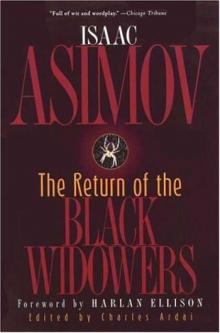 The Return of the Black Widowers
The Return of the Black Widowers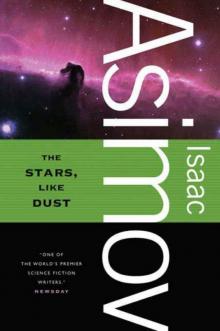 The Stars, Like Dust
The Stars, Like Dust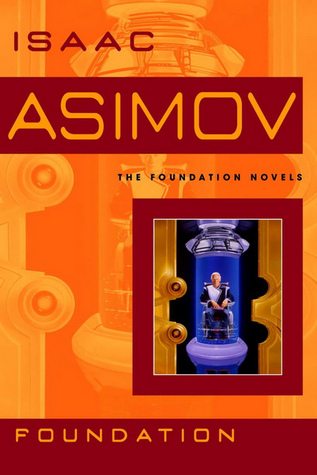 Foundation
Foundation David Starr Space Ranger
David Starr Space Ranger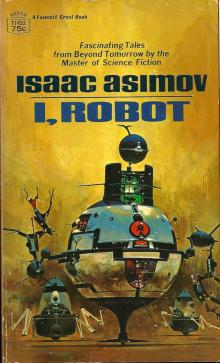 I, Robot
I, Robot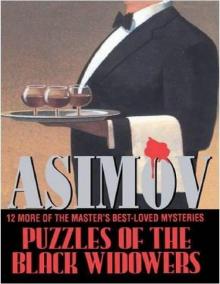 Puzzles of the Black Widowers
Puzzles of the Black Widowers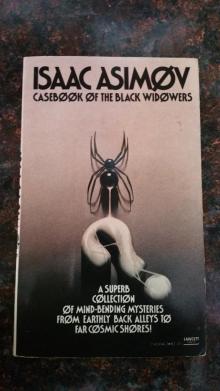 Casebook of the Black Widowers
Casebook of the Black Widowers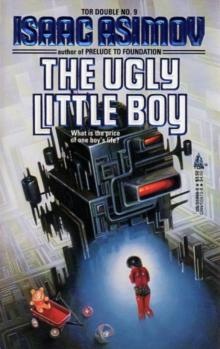 The Ugly Little Boy
The Ugly Little Boy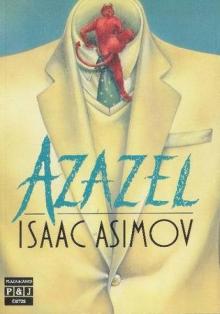 Azazel
Azazel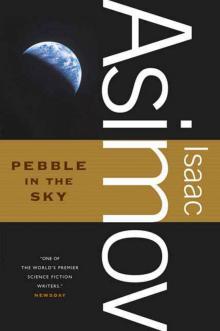 Pebble in the Sky
Pebble in the Sky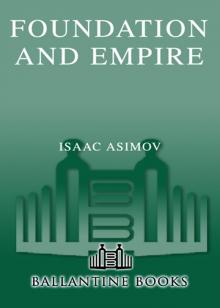 Foundation and Empire
Foundation and Empire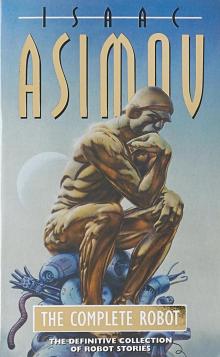 The Complete Robot
The Complete Robot Fantastic Voyage
Fantastic Voyage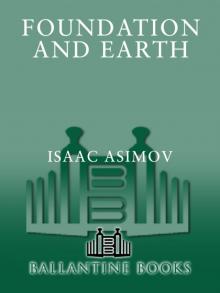 Foundation and Earth
Foundation and Earth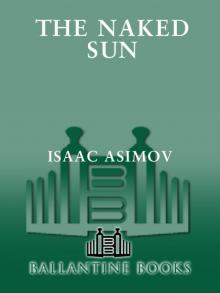 The Naked Sun
The Naked Sun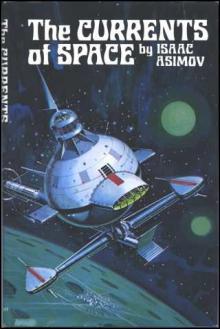 The Currents of Space
The Currents of Space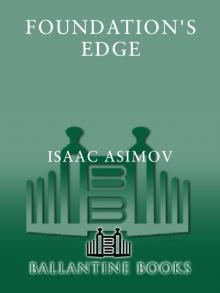 Foundation's Edge
Foundation's Edge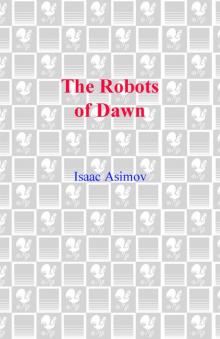 The Robots of Dawn
The Robots of Dawn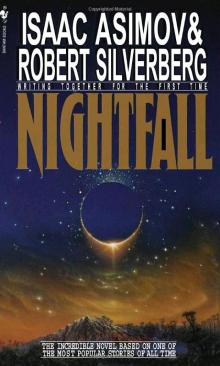 Nightfall
Nightfall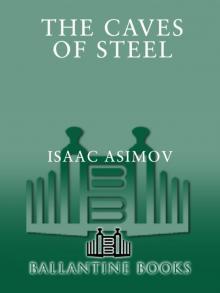 The Caves of Steel
The Caves of Steel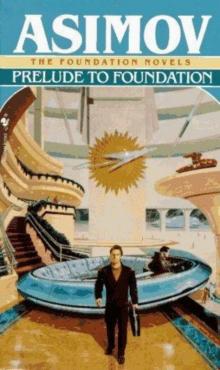 Prelude to Foundation
Prelude to Foundation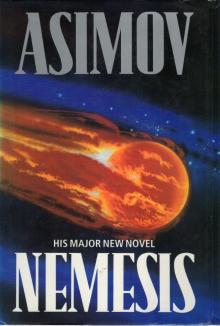 Nemesis
Nemesis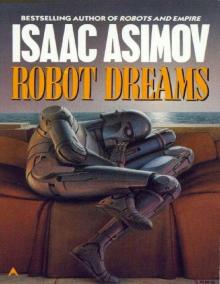 Robot Dreams
Robot Dreams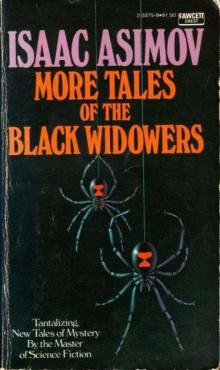 More Tales of the Black Widowers
More Tales of the Black Widowers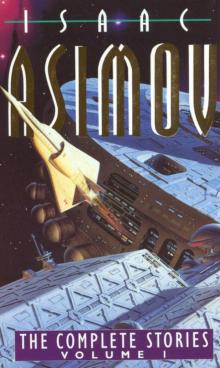 The Complete Stories
The Complete Stories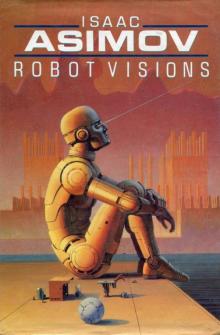 Robot Visions
Robot Visions Lucky Starr And The Moons of Jupiter
Lucky Starr And The Moons of Jupiter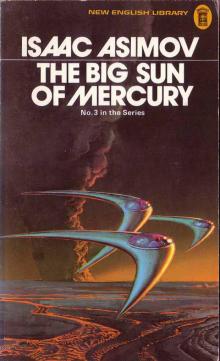 Lucky Starr and the Big Sun of Mercury
Lucky Starr and the Big Sun of Mercury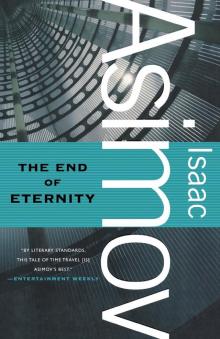 The End of Eternity
The End of Eternity The Bicentennial Man and Other Stories
The Bicentennial Man and Other Stories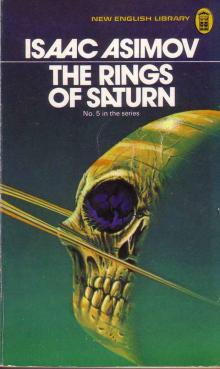 Lucky Starr And The Rings Of Saturn
Lucky Starr And The Rings Of Saturn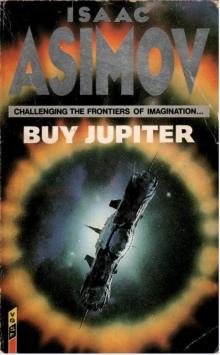 Buy Jupiter and Other Stories
Buy Jupiter and Other Stories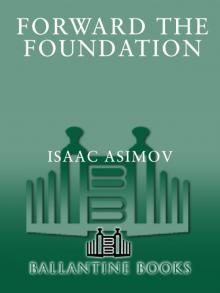 Forward the Foundation
Forward the Foundation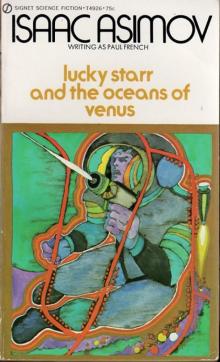 Lucky Starr and the Oceans of Venus
Lucky Starr and the Oceans of Venus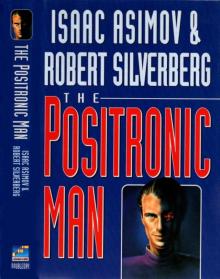 The Positronic Man
The Positronic Man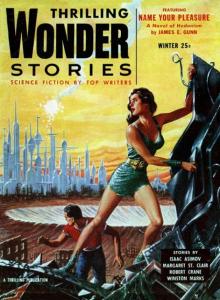 The Portable Star
The Portable Star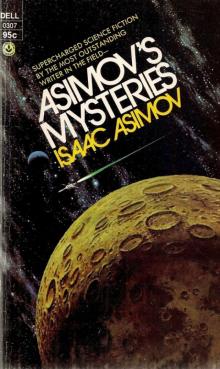 Asimovs Mysteries
Asimovs Mysteries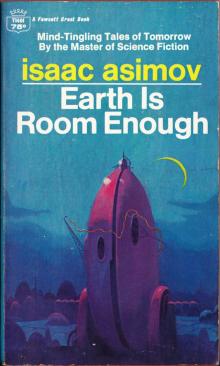 Earth Is Room Enough
Earth Is Room Enough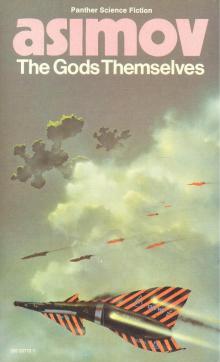 The Gods Themselves
The Gods Themselves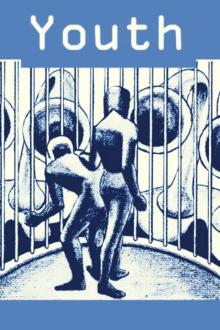 Youth
Youth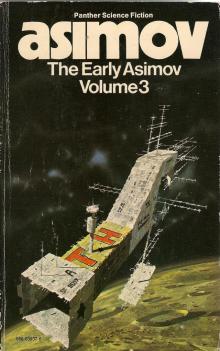 The Early Asimov Volume 3
The Early Asimov Volume 3 The Winds of Change and Other Stories
The Winds of Change and Other Stories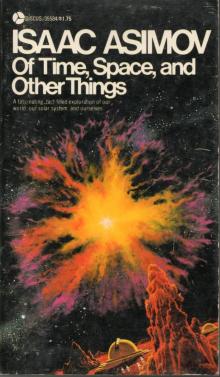 Of Time, Space, and Other Things
Of Time, Space, and Other Things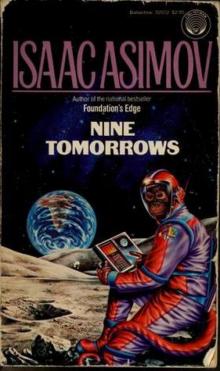 Nine Tomorrows
Nine Tomorrows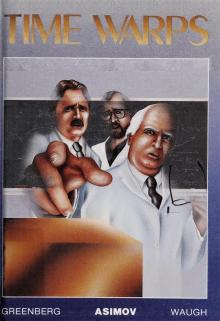 Time Warps
Time Warps Robots and Empire
Robots and Empire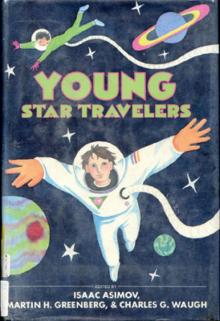 Young Star Travelers
Young Star Travelers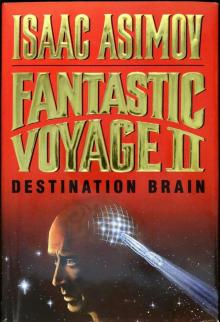 Fantastic Voyage II: Destination Brain
Fantastic Voyage II: Destination Brain Second Foundation
Second Foundation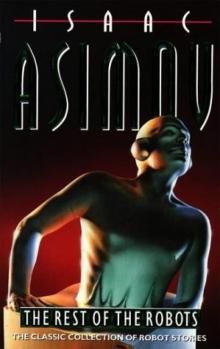 The Rest of the Robots
The Rest of the Robots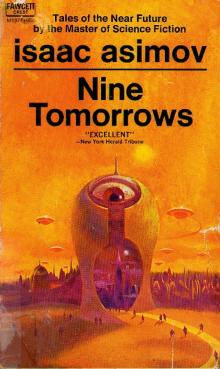 NINE TOMORROWS Tales of the Near Future
NINE TOMORROWS Tales of the Near Future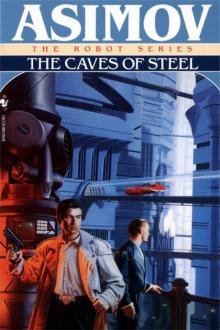 Daneel Olivaw 1 - The Caves of Steel
Daneel Olivaw 1 - The Caves of Steel THE BICENTENNIAL MAN
THE BICENTENNIAL MAN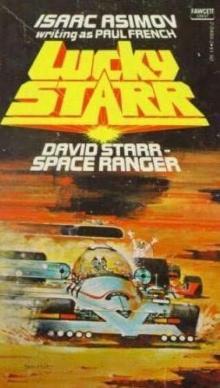 David Starr Space Ranger (lucky starr)
David Starr Space Ranger (lucky starr)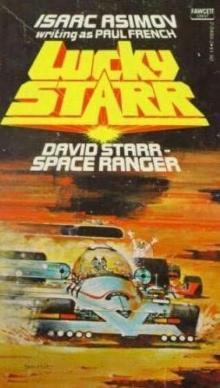 David Starr Space Ranger (ls)
David Starr Space Ranger (ls)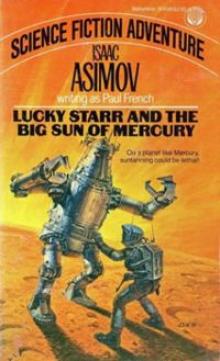 Lucky Starr And The Big Sun Of Mercury ls-4
Lucky Starr And The Big Sun Of Mercury ls-4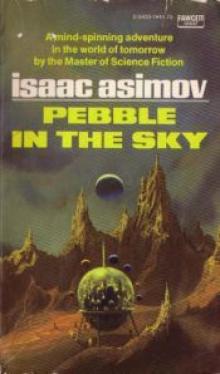 Pebble In The Sky te-1
Pebble In The Sky te-1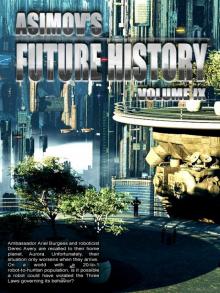 Asimov’s Future History Volume 9
Asimov’s Future History Volume 9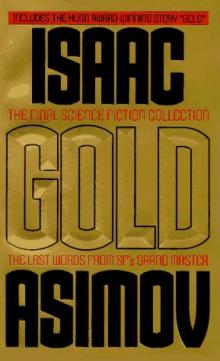 Gold: The Final Science Fiction Collection
Gold: The Final Science Fiction Collection Foundation and Earth f-7
Foundation and Earth f-7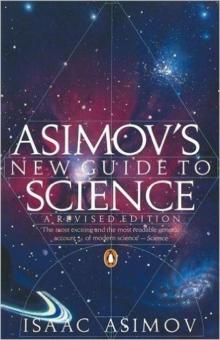 Asimov's New Guide to Science
Asimov's New Guide to Science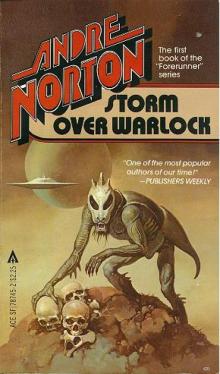 STORM OVER WARLOCK
STORM OVER WARLOCK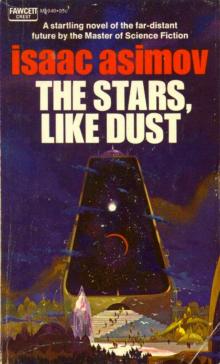 Stars, Like Dust
Stars, Like Dust Norby The Mixed-Up Robot
Norby The Mixed-Up Robot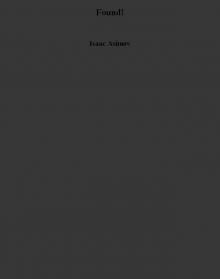 Found!
Found!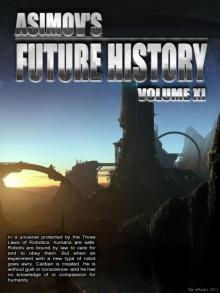 Asimov’s Future History Volume 11
Asimov’s Future History Volume 11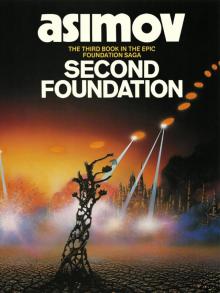 Second Foundation f-5
Second Foundation f-5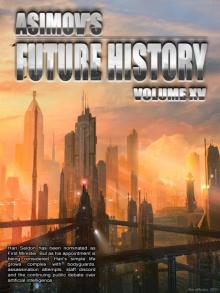 Asimov’s Future History Volume 15
Asimov’s Future History Volume 15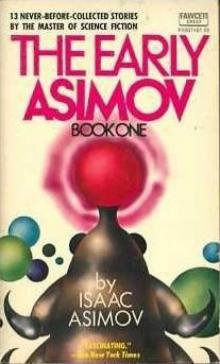 The Early Asimov. Volume 1
The Early Asimov. Volume 1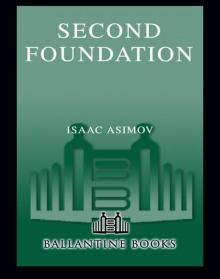 Secound Foundation
Secound Foundation Daneel Olivaw 3 - The Robots of Dawn
Daneel Olivaw 3 - The Robots of Dawn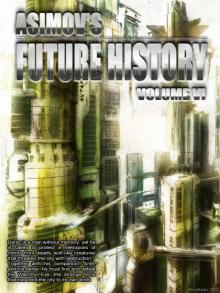 Asimov’s Future History Volume 6
Asimov’s Future History Volume 6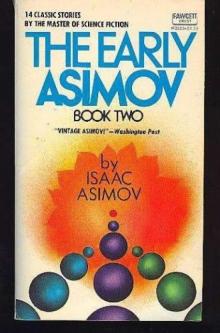 The Early Asimov. Volume 2
The Early Asimov. Volume 2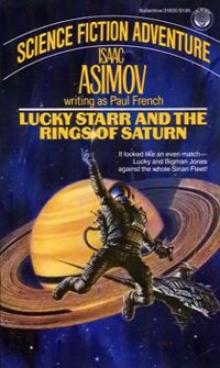 Lucky Starr And The Rings Of Saturn ls-6
Lucky Starr And The Rings Of Saturn ls-6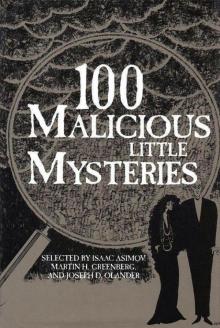 100 Malicious Little Mysteries
100 Malicious Little Mysteries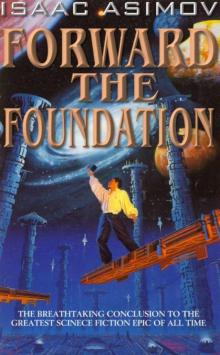 Forward the Foundation f-2
Forward the Foundation f-2 I.Asimov: A Memoir
I.Asimov: A Memoir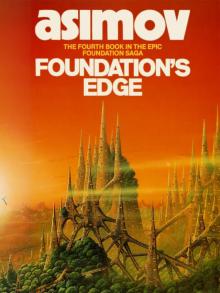 Foundation's Edge f-6
Foundation's Edge f-6 Lucky Starr and the Pirates of the Asteroids ls-2
Lucky Starr and the Pirates of the Asteroids ls-2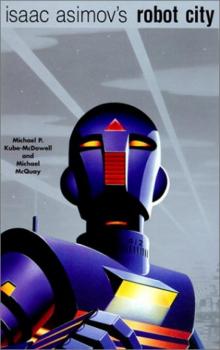 Robot City 1 & 2
Robot City 1 & 2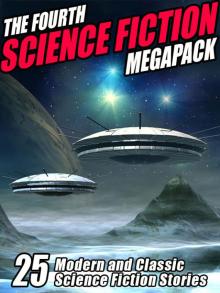 The Fourth Science Fiction Megapack
The Fourth Science Fiction Megapack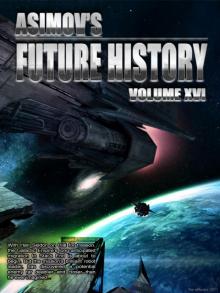 Asimov’s Future History Volume 16
Asimov’s Future History Volume 16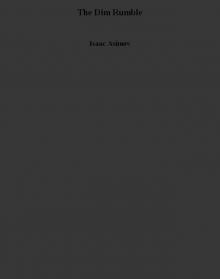 The Dim Rumble
The Dim Rumble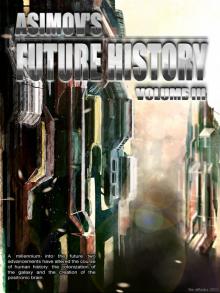 Asimov's Future History Volume 3
Asimov's Future History Volume 3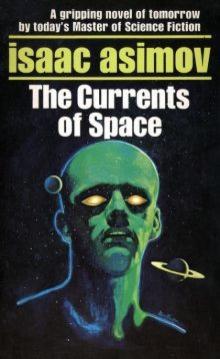 The Currents Of Space te-3
The Currents Of Space te-3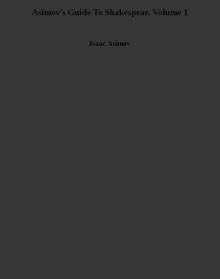 Asimov’s Guide To Shakespear. Volume 1
Asimov’s Guide To Shakespear. Volume 1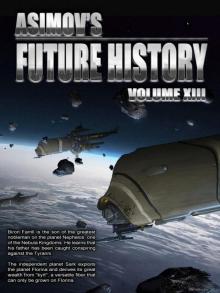 Asimov’s Future History Volume 13
Asimov’s Future History Volume 13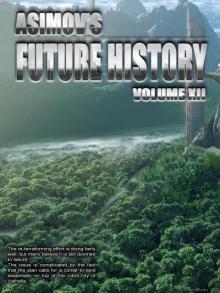 Asimov’s Future History Volume 12
Asimov’s Future History Volume 12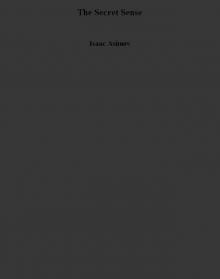 The Secret Sense
The Secret Sense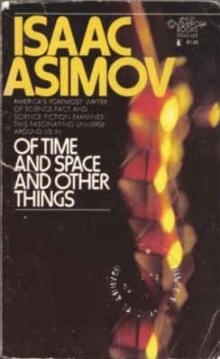 Of Time and Space and Other Things
Of Time and Space and Other Things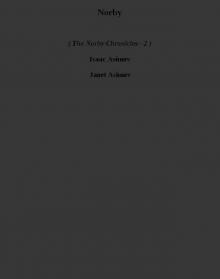 Norby tnc-2
Norby tnc-2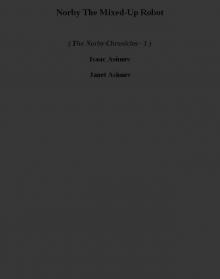 Norby The Mixed-Up Robot tnc-1
Norby The Mixed-Up Robot tnc-1 Misbegotten Missionary
Misbegotten Missionary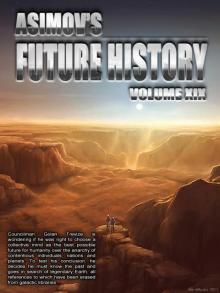 Asimov’s Future History Volume 19
Asimov’s Future History Volume 19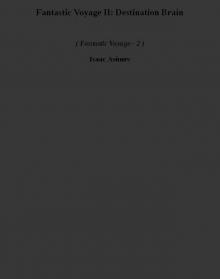 Fantastic Voyage II: Destination Brain fv-2
Fantastic Voyage II: Destination Brain fv-2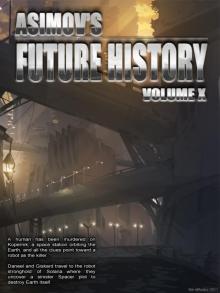 Asimov’s Future History Volume 10
Asimov’s Future History Volume 10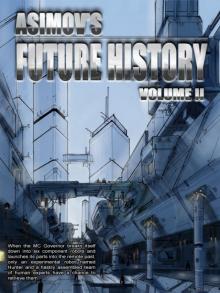 Asimov's Future History Volume 2
Asimov's Future History Volume 2 Feeling of Power
Feeling of Power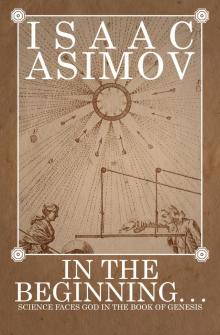 In the Beginning
In the Beginning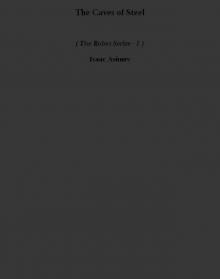 The Caves of Steel trs-1
The Caves of Steel trs-1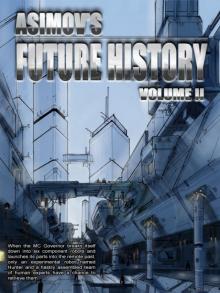 Asimov's Future History Vol 2
Asimov's Future History Vol 2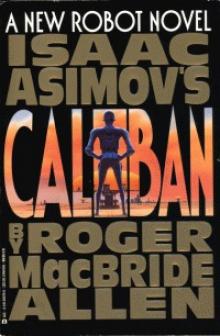 Caliban c-1
Caliban c-1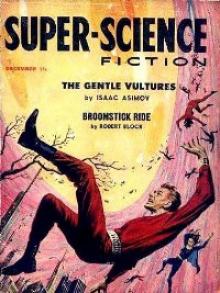 The Gentle Vultures
The Gentle Vultures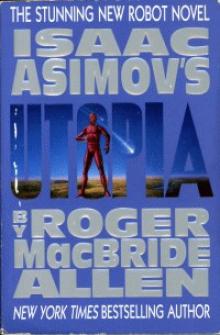 Utopia c-3
Utopia c-3 Prelude to Foundation f-1
Prelude to Foundation f-1 Short Stories Vol.1
Short Stories Vol.1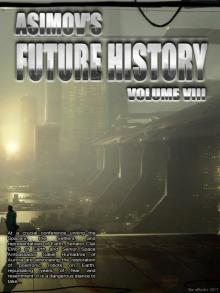 Asimov’s Future History Volume 8
Asimov’s Future History Volume 8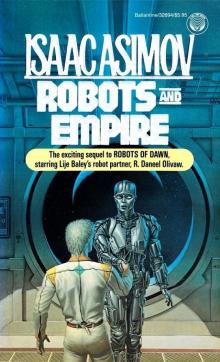 Daneel Olivaw 4 - Robots and Empire
Daneel Olivaw 4 - Robots and Empire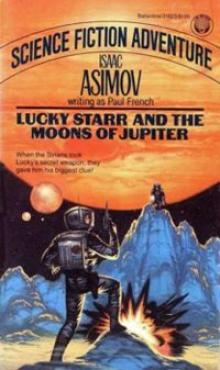 Lucky Starr The And The Moons of Jupiter ls-5
Lucky Starr The And The Moons of Jupiter ls-5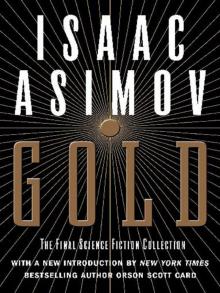 Gold
Gold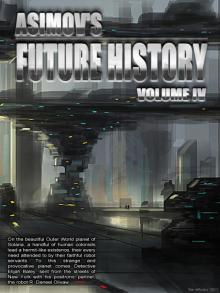 Asimov’s Future History Volume 4
Asimov’s Future History Volume 4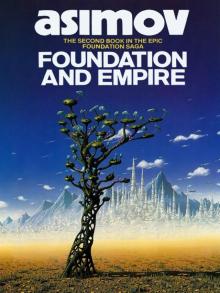 Foundation and Empire f-4
Foundation and Empire f-4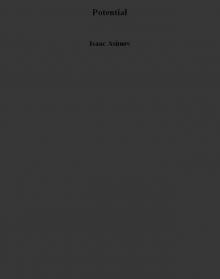 Potential
Potential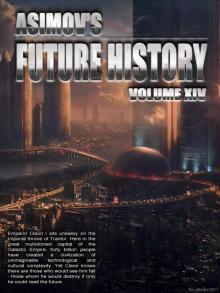 Asimov’s Future History Volume 14
Asimov’s Future History Volume 14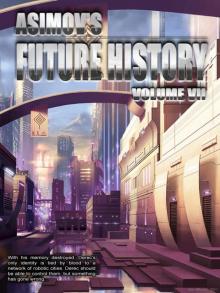 Asimov’s Future History Volume 7
Asimov’s Future History Volume 7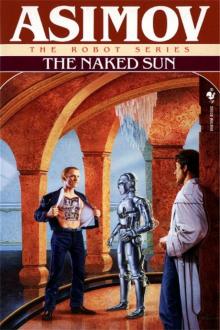 Daneel Olivaw 2 - The Naked Sun
Daneel Olivaw 2 - The Naked Sun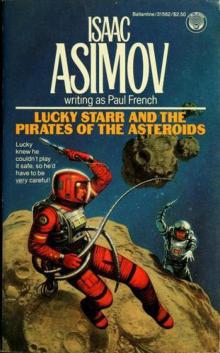 Lucky Starr and the Pirates of the Asteroids
Lucky Starr and the Pirates of the Asteroids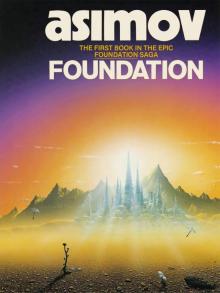 Foundation f-3
Foundation f-3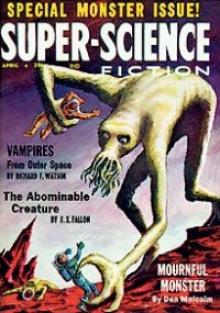 All the Troubles of the World
All the Troubles of the World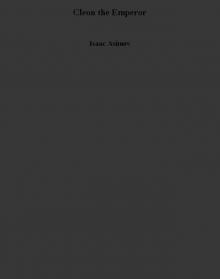 Cleon the Emperor
Cleon the Emperor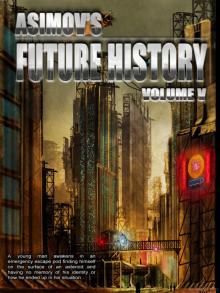 Asimov's Future History Volume 5
Asimov's Future History Volume 5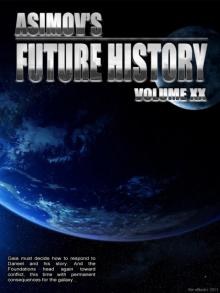 Asimov’s Future History Volume 20
Asimov’s Future History Volume 20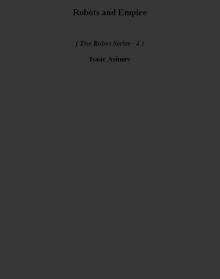 Robots and Empire trs-4
Robots and Empire trs-4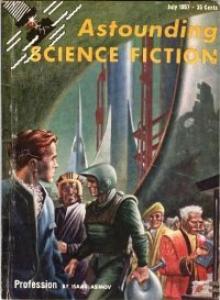 Profession
Profession It's Been a Good Life
It's Been a Good Life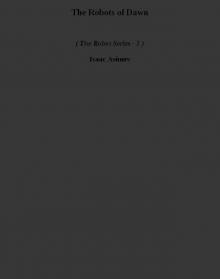 The Robots of Dawn trs-3
The Robots of Dawn trs-3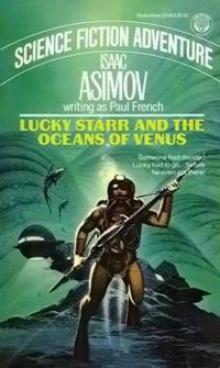 Lucky Starr And The Oceanf Of Venus ls-3
Lucky Starr And The Oceanf Of Venus ls-3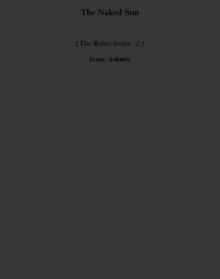 The Naked Sun trs-2
The Naked Sun trs-2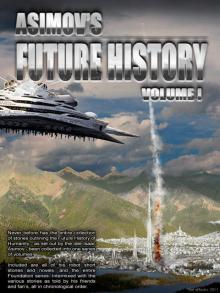 Asimov's Future History Volume 1
Asimov's Future History Volume 1